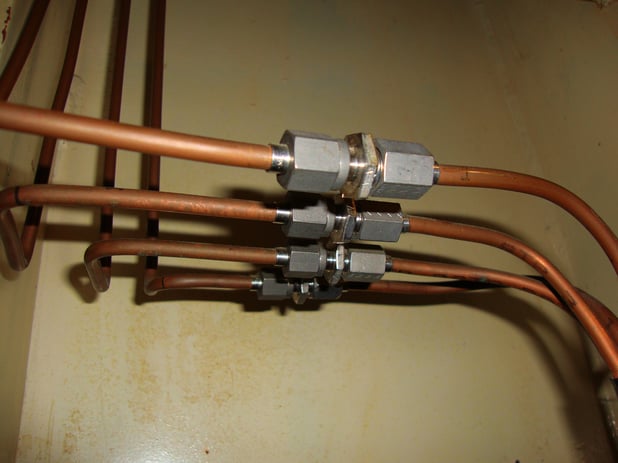Gas Detection Systems for Buildings: Sensors & Monitors

What is Gas Detection?
As we all know, the atmosphere is made up of gas. Some of these gasses, like oxygen, are necessary for breathing, but other gasses, like carbon monoxide, can be hazardous to our health. Because you can’t visually detect these dangerous gasses, you need to have the proper equipment to sense the presence of gasses in the air around you.
Gas detection is an important part of workplace safety and is an essential component of building management. Gas detection is the process of detecting specific gasses in an environment by using the proper equipment to test and monitor the air and then alert you if there is something wrong.
Why is Gas Detection Important?
Gas detection is extremely important for many different reasons. It prevents serious illness and death that can result from breathing in dangerous chemicals and gasses in the workplace. In order to avoid these unsafe conditions, you need to be proactive in detecting gas. Other crucial benefits include:
- Maintaining a comfortable oxygen level for breathing
- Helping identify potential pollutants in the air
- Optimizing the indoor air quality of your building to keep people in the building healthier and happier
- Assisting with air ventilation
- Receiving real-time updates about gas levels in a specific area
- Staying compliant with requirements for air quality standards
What is a Gas Sensor?
As mentioned earlier, dangerous gasses don’t look any different from the regular air around us. They are also hard to detect through our other senses, like taste and smell. Because of that, we can’t rely on our own detection skills to notice gasses in an area. Instead, we need a gas sensor, otherwise known as a gas detector.
Gas detectors are pieces of equipment that are used to detect specific gasses in an area and send out an alert if there is a change in the air that differs from the normal air quality and makeup. These sensors help to keep people healthy and allow you to work safely in a building.
How Do Gas Sensors Work?
A gas detector measures the specific concentration of gasses in an area and takes constant readings to determine what the current levels of different gasses are at the moment of the reading. It will then give out a series of alerts, both audible and visual, like a siren and a flashing light, in order to alert people nearby of a dangerous situation.
What Does a Gas Sensor Detect?
Gas sensors can pick up a wide range of gasses, but there are four common types of gas that are regularly monitored in a construction or building site. These are:
- Oxygen
- Carbon monoxide
- Hydrogen sulfide
- Methane
In addition to these four common gasses, the detector might also be monitoring levels of:
- Chlorine
- Nitrogen dioxide
- Butane
- Ethanol
- Smoke
- Natural gas
- Volatile organic compounds
What are the Common Gas Sensor Types?
While some gas sensors will detect a range of different gasses, there are a few different ways in which they can detect the levels of gas in an area. Here are some of the common gas sensor types and how they work.
Electrochemical Gas Sensors: These sensors help to detect toxic gasses with electrode signals that can measure when a certain amount of gas is in the air. These tend to be highly sensitive.
Catalytic Diffusion Gas Sensors: Also known as catalytic bead sensors, these detectors will use a platinum-treated wire coil to identify any combustible gas in the air, which will oxidize when making contact with the coil. This will then trip an alarm to alert people in the area.
Infrared Gas Sensors: These sensors use light transmitters to measure gas in the air and determine what level the gas is at before sending an alarm when it detects high levels of hazardous gas.
Metal Oxide Gas Sensors: These sensors use a sensitive film of tin or tungsten oxide that measures electron movement through the air and can detect when free electrons are displaced by dangerous gasses.
Differences Between Gas Detectors and Gas Monitors
It’s important to note that gas detectors are not the same thing as a gas monitor. These are separate pieces of equipment that are used in different settings. A gas detector tends to be a part of the larger building system and is installed in the building itself. On the other hand, a gas monitor is a portable device that can be moved around during construction to monitor levels in different rooms and areas of the building.
To learn more about gas detectors and discover what options are out there for your business, visit the Veris gas detection product page and see for yourself the wide array of options available for you to purchase today.





